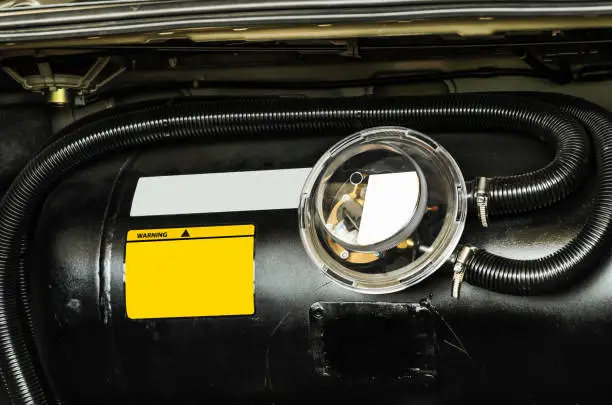
Enhancing Efficiency and Precision in Automotive Barcode Label Operations with Barcode Labeling.
In the dynamic world of automotive manufacturing and logistics, precision and efficiency are paramount.
Each component, whether it’s a tiny bolt or a complex engine assembly, must seamlessly integrate into the larger vehicle, ensuring safety, reliability, and performance.

In this intricate dance of parts and processes, the role of Automotive Barcode Label emerges as a silent yet indispensable hero, orchestrating the flow of materials with precision and efficiency.
Barcode labeling has revolutionized various industries, and the automotive sector is no exception.
From streamlining inventory management to enabling real-time tracking of parts throughout the supply chain, barcode labels have become the backbone of automotive operations, offering a myriad of benefits that enhance productivity, accuracy, and overall performance.
Streamlining Inventory Management
In the sprawling landscape of automotive manufacturing facilities and warehouses, managing inventory can be a daunting task.
However, with barcode labeling, this complexity transforms into simplicity.
Each component, whether it’s a raw material awaiting assembly or a finished product ready for distribution, receives a unique barcode label that encapsulates vital information such as part number, serial number, batch number, and manufacturing date.
By scanning these Automotive Barcode Label, inventory managers can instantly access comprehensive data about each item, including its location within the facility, quantity on hand, and status in the production process.
This real-time visibility empowers organizations to optimize inventory levels, minimize stockouts, and reduce carrying costs, thereby streamlining operations and enhancing cost-effectiveness.
Facilitating Traceability and Quality Control
In the automotive industry, traceability is not just a regulatory requirement but also a fundamental necessity for ensuring product quality and safety.
Automotive Barcode Label plays a pivotal role in enabling end-to-end traceability, allowing manufacturers to track the journey of each component from its origin to its final destination.
By scanning barcode labels at various checkpoints along the production line, manufacturers can monitor the movement of parts, verify their authenticity, and identify any deviations from prescribed standards.
In the event of a quality issue or product recall, barcode data enables swift and precise identification of affected components, facilitating targeted interventions and minimizing the impact on production schedules and customer satisfaction.

Empowering Just-in-Time Manufacturing Automotive Barcode Label
Just-in-Time (JIT) manufacturing has become a cornerstone of efficiency in the automotive industry, enabling manufacturers to minimize waste, reduce lead times, and respond swiftly to changing customer demands. Barcode labeling plays a crucial role in enabling JIT practices by providing real-time visibility into inventory levels, production schedules, and order requirements.
By scanning barcode labels at each stage of the manufacturing process, production managers can monitor the consumption of materials, identify bottlenecks, and adjust production schedules dynamically to optimize resource utilization. This agile approach not only reduces excess inventory and storage costs but also enhances responsiveness to market fluctuations, enabling automotive companies to stay competitive in a rapidly evolving landscape.
Enhancing Supply Chain Collaboration in Automotive Barcode Label
In today’s globalized automotive supply chain, collaboration is key to success. Barcode labeling facilitates seamless communication and collaboration among stakeholders, including suppliers, manufacturers, distributors, and service providers. By standardizing labeling protocols and data formats, barcode technology enables interoperability across diverse IT systems and ensures consistent data exchange throughout the supply chain.
Whether it’s tracking inbound shipments of raw materials, managing work-in-progress inventory, or monitoring outbound deliveries to dealerships, barcode labels serve as a common language that transcends organizational boundaries. This shared visibility fosters trust, transparency, and efficiency, enabling automotive companies to forge stronger partnerships and deliver superior value to customers.
Embracing the Future of Automotive Barcode Label Manufacturing
As automotive manufacturers navigate the complexities of Industry 4.0 and embrace digital transformation, barcode labeling remains a cornerstone of their operational strategy.
From traditional linear barcodes to advanced two-dimensional codes such as QR codes and DataMatrix, the evolution of barcode technology continues to unlock new possibilities for efficiency, traceability, and innovation in automotive operations.
Looking ahead, the integration of barcode labeling with emerging technologies such as Internet of Things (IoT), artificial intelligence (AI), and blockchain promises to further enhance the capabilities of automotive supply chains.
By harnessing the power of data analytics and machine learning, automotive companies can gain deeper insights into their operations, optimize decision-making processes, and unlock new opportunities for continuous improvement.
In conclusion, barcode labeling is not just a mundane labeling technique; it’s a strategic enabler of efficiency, precision, and agility in the automotive industry.
By leveraging barcode technology to its fullest potential, automotive companies can streamline their operations, ensure compliance with regulatory requirements, and deliver exceptional value to customers in an increasingly competitive marketplace.
As the automotive landscape continues to evolve, barcode labeling will remain an indispensable tool for driving success in the digital age



Top Sticker Label Manufacturers in Noida - Barcode International
[…] Automotive Labels […]